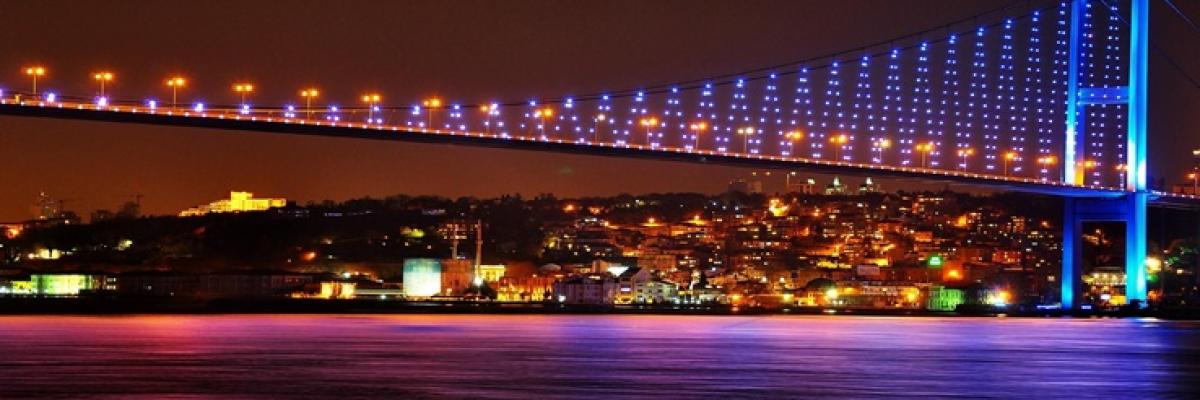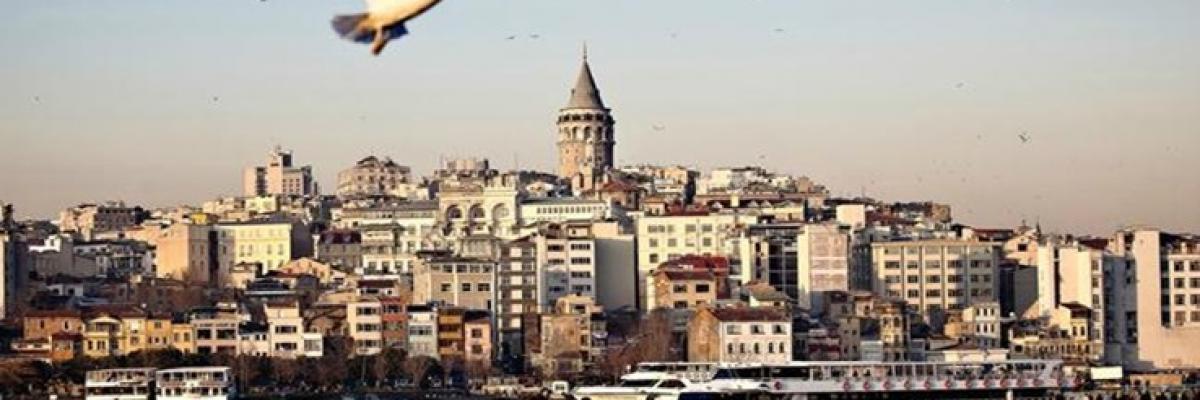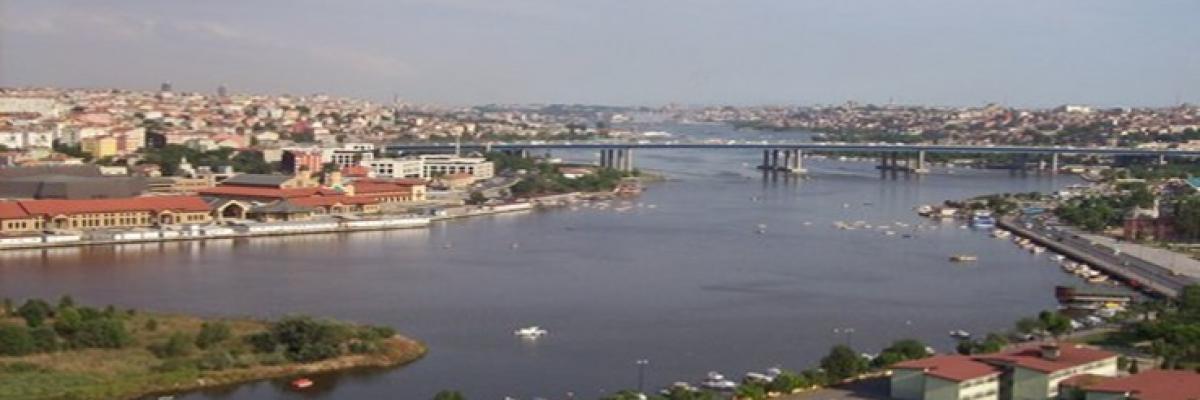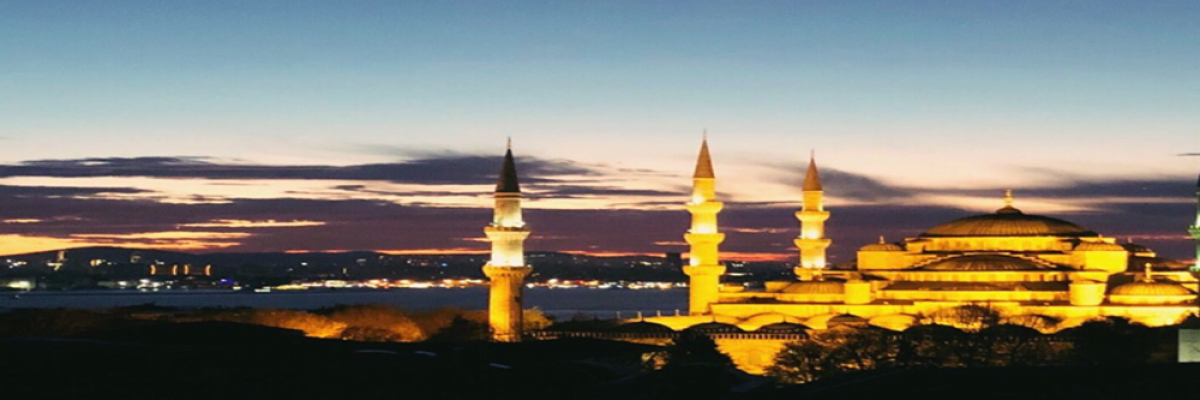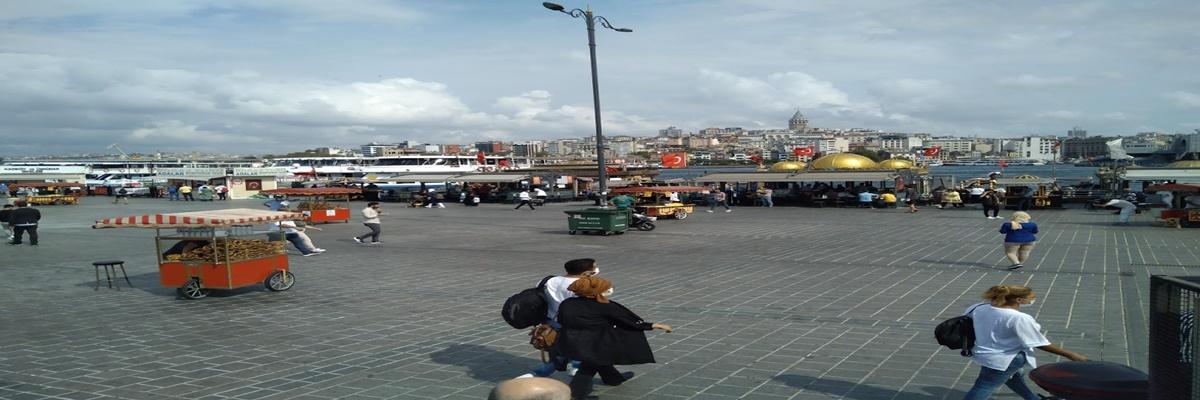Antalya
ANTALYA

GENERAL INFORMATION
Area measurement: 20.723 km²
Population: 2,328,555
Geographical position:
Antalya province, south of Turkey, is a tourist center in the center of the Mediterranean coast. North; Burdur, Isparta, Konya, to the east; Karaman, Mersin, west of it; There are provinces of Muğla. Its south is surrounded by the Mediterranean. The length of the Turkish Riviera Antalya coasts reaches 630 km.

History:
Antalya, which means "Attalos Dormitory", II. It was founded by Attalos. After the end of the Kingdom of Pergamon (133 BC), the city, which remained independent for a while, later passed into the hands of pirates. B.C. It was annexed by Commander Servilius Isauricus in 77 BC. B.C. In 67 BC, he became superior to Pompeius' navy. M.S. The visit of Hadrianus to Attaleia in 130 helped the development of the city. During the Byzantine rule, Attaleia, which was known as the episcopal center, showed a great development after it was captured by the Turks. Since the modern city was founded on the ancient settlement, there are very few ancient ruins in Antalya. The first of the ruins that can be seen is the part described as the old port and the wall surrounding the harbor. The restored Hadrian's Gate, outside the park, is one of the most beautiful ancient works of Antalya.
Monumental tomb Antalya city and its surroundings were called Pamphylia, which means “very fertile” in ancient times, and the western part was called Lykia.
Those who migrated here from the west coast of the Aegean Sea from the eighth century BC; They founded cities such as Aspendos and Side. King of Pergamum II, who ruled in the middle of the second century. Attalos surrounded Side. Approximately 75 km of Antalya. The king, who could not take Side to the east, came to the place where the current city center is and established a city. This place was called Attaleia after her name. In time, some people called Atalia, Adalya. Antalya comes from his name.
In archaeological excavations, it has been proven that people lived in Antalya and its region 40 thousand years ago. The region since 2000 BC, respectively; It was ruled by city states such as Hittite, Pamphylia, Lycia, Cilicia and Pers, Alexander the Great and its successor Antigonos, Ptolemais, Seleucus, Pergamon Kingdom. Later, the Roman State ruled. The ancient name of Antalya was Pamphylia and the cities established here, especially II. and III. century lived its golden age. It lost its former glory towards the 5th century.
Kaleici
The area was under the Eastern Roman or Byzantine domination of the name recognized in Turkey, 1207 by the Seljuks, joined Turkish territory. In the period of Anatolian Principalities, it came under the sovereignty of Hamitoğulları, a branch of Teke Tribe. Teke Turkmens are one of the biggest tribes in terms of population in today's Turkmenistan, the old homeland of Turks. XI. century, some of them came here Today, the Lake District, which is the north of Antalya and a part of Isparta and Burdur, is also called the Teke region. During the Ottoman period, the center of the Teke sanjak, which was connected to the Anatolian province, was now the city center of Antalya. In those years, it was called Teke sancak. The current name of the province is actually a slightly changed form of its ancient name and was given in the Republic period.
The famous Ottoman traveler Evliya Çelebi, who came to Antalya in the second half of the 17th century, states that there are four neighborhoods and three thousand houses inside the castle and 24 neighborhoods outside the castle. The bazaar of the city was outside the castle. According to Evliya Çelebi, its port is large enough to accommodate a 200-piece ship. Antalya, which was the center of the Teke Sanjak of Konya in administrative terms, was turned into an independent banner in the last years of the Ottoman Empire.
Today's Kaleiçi houses are surrounded by walls inside and outside in the shape of horseshoe, most of which are destroyed and destroyed. The walls are the common work of Hellenistic, Roman, Byzantine, Seljuk and Ottoman periods. The walls have 80 towers. There are about 3,000 houses with tile roofs inside the walls. The characteristic structures of the houses not only give an idea about the architectural history of Antalya, but also reflect the lifestyle, traditions and customs in the region in the best way. In 1972, Antalya inner port and Kaleiçi district were taken under protection as a "protected area" by the "Real Estate Antiquities and Monuments High Council" due to its unique texture. The Ministry of Tourism was awarded the Golden Apple Tourism Award by FİJET (International Tourism Writers Association) on April 28, 1984, for the "Antalya-Kaleiçi Complex" renovation work. Today, Kaleiçi has become an entertainment center with its hotels, hostels, restaurants and bars.

Old Antalya Houses:
In Antalya, where the summers are very hot and the winters are mild, the importance was given to preventing the sun and providing coolness rather than the cold in the construction of old houses. Shady stones and courtyards are features that facilitate air flow. It is built on three floors with its entrance serving as a warehouse and hall.
Fluted Minaret:
It is the first Turkish structure of Antalya. It is near the port in the center. According to the inscription on it, it was built during the rule of Anatolian Seljuk Sultan Alaeddin Keykubat (1219-1236). Its body, knitted with bricks, consists of eight half-cylinders. If there was a mosque adjacent to this minaret, it must have been demolished. Because the mosque next to the minaret belongs to the later period, 1372. It was built by an architect named Tavaşi Balaban during the period of Hamitoğulları, a Turkish principality.

Şehzade Korkut Mosque:
Antalya Kaleiçi, which has been inhabited uninterruptedly since 2500 years ago, has hosted different civilizations during this period. The archaeological site, where the mosque is also located, contains the oldest known living spaces of the city.
A monumental church was built in the 6th century A.D. in a corner of the area, which was built between 330-30 B.C. and functioned as an agora, which was the heart of the city throughout the Roman Period. The building, which was later used as a mosque in the Turkish period, bearing the traces of different civilizations, was registered as a cultural asset. This work, which continued to function as a place of worship uninterruptedly until the fire disaster in 1896, became unusable due to the heavy damage it suffered and was abandoned to its fate until recently.
Although the partial repairs carried out by the General Directorate of Foundations in the 1970s prevented further destruction of the building, new destructions occurred over time. Irreversible losses were experienced, especially due to static problems and material destruction. With the data of scientific excavations carried out in 2007-2008, after examinations with important scientists of our country, especially the main walls cannot be sustained with only reinforcements, this situation poses a great danger to human life and the existence of existing ruins, inclined and separated walls that tend to collapse, empty joints, It has been understood that the continuous and rapidly increasing material losses due to the fire the building underwent cannot be prevented by simple interventions.
It has been concluded that all of the remains in the area can only be recovered without destruction through extensive restoration, completion and landscaping works. By working with competent and competent scientists and experts in different fields; It is aimed to keep the ruins of different cultural periods in the archaeological area without further destruction, to arrange and exhibit approximately 1200 qualified stones uncovered in the area, and to bring the indoor space with its last function recorded as Şehzade Korkut Mosque. In the consolidation and restoration works, care was taken not to touch the original material in the archaeological site and the building without any problems, to remove the original material belonging to the walls with static problems by numbering and reuse them on site.
Karatay Madrasa:
It is one of the important Turkish Islamic buildings in the city center and was built in the middle of the 13th century.
Evdir Han:
Until the beginning of the 20th century, transportation was provided by horses and camels, and trade goods were transported with these animals. Caravans used to lodge on the roads, in "Han" and caravanserais. Here, Evdir Han is one of them. It is on the road from Antalya to the north. 1 km of today's Antalya-Korkuteli highway. east and 18 km from the city center. away. The most striking part is the main entrance door with a pointed arch. It is a Seljuk work built in the early 13th century.
Kırkgöz Han:
The second stop on the Antalya - Afyon old road is Kırkgöz Han. Kırkgöz Han is 30 km from Antalya. It is located in Kırkgöz, in Pınarbaşı area. It is in a very solid condition.

Düden Waterfalls:
Approximately 10 km from Antalya city center. This waterfall in the northeast is one of the natural beauties that symbolize the city. It is poured from a height of 20 meters. Its main source is Kırkgöz location. The Lower Düden Waterfall is on the road to Lâra Beach. It is poured into the sea from the cliffs 40 meters high in the southeast of the city center. It is one of the iconic natural beauties of Antalya.
Kursunlu Waterfall:
It is 7 km after entering the Isparta road from the turn at the 24th km of the Alanya road east of the city center. then, it can be reached. This natural wonder is also one of the most visited places. The waterfall seems to have come out of a fairy tale realm. It is in a deep green valley. The whole surrounding can be visited with a half hour walk. A large number of fish live in the waters where ponds are formed in places. It also stands out for its rich nature. Düden, Kurşunlu and Manavgat Waterfalls have been used as scenes in many Turkish films. All of them can be easily reached by bus.
Lara - Konyaaltı Beach:
10 km from Antalya city center. Lara Beach to the east of Antalya and Konyaaltı Beach on the west coast of Antalya center are the most beautiful coasts of the city.
Perge:
It is located 18 km east of Antalya, near Aksu sub-district. It is an important Pamphylian city as it is located on the Cilicia - Pisidia trade route. Its foundation coincides with other Pamphylian cities (7th century BC). Perge was an important city for Christians. Saint Paul and Barnabas came to Perge. Some wealthy people like Magna Plancia have brought important monuments here.
In Perge, where the first excavations were initiated by Istanbul University in 1946; City ruins consisting of Theater, Stadium, Colonnaded Street, Agora were found.
Karain Cave:
27 km of Antalya. The remains found in the Karain Cave within the borders of Yağcılar in the northwest belong to the Paleolithic, Mesolithic, Neolithic and Bronze ages. This cave is one of the must-see places.
Ariassos:
On the 48th kilometer of the Antalya-Burdur highway, 1 km from a left turn. is inside. It is established on the slope of a mountain and is worth seeing in terms of baths and rock tombs. At the beginning of the valley that enters the city of Ariassos, the most magnificent ruin of the city, the entrance gate rises. This monument from the Roman period is referred to by the locals as “Three Gates” because it has 3 arches and therefore 3 entrances. A surprising feature of the city is that three-quarters of them are remnants of the necropolis, extraordinarily magnificent monumental tombs.
Life:
There is also the legacy of two lifestyles that have permeated for centuries in and around Antalya. When the Turks first came here, they immediately followed the established order; they founded villages, towns and cities. A part of the population has continued a nomadic life as before the arrival of the Turks in Anatolia. According to this semi-sedentary lifestyle, at least 15-20 relatives, sometimes hundreds of families; they lived in hairy tents, went up to the mountains in summer, and went down to the warm plains called winter quarters in winter. They raised animals such as camels and sheep, and made a living by exchanging or selling the products they produced from them with the products of the settled people. They produced meat, milk, oil, and weaved hair tents and natural root dyed rugs. There were even those who sow cereals and vegetables in narrow areas in the winter quarters. There were even large groups of nomads (tribes, clans) that raised horses for the Ottoman army.
Turkish rugs, which today adorn the most important museums of Europe, are the handicrafts of these people. A great part of today's folk music culture is a legacy from nomads. The greatest poets of Turkish folk poetry and music such as Karacaoğlan and Dadaloğlu are the representatives of this culture. While those who have lived in settled life in rural villages for a long time describe themselves as "local, peasant", they say "This is the Yoruk village" if you go to a village where the nomads are settled collectively. You can hear such descriptions in almost every part of Turkey. However, even if people emphasize this difference in life that goes back in the past, they all have the same roots and are Turkish. Actually, they do not look at each other differently and see this as a wealth.
Today, Turkey is providing the best adaptation to contemporary modern life, technology is one of the countries that use in the best way. But today, there are a few small groups of nomads that have both nostalgic and cultural value, who have continued life for thousands of years. Their number does not exceed a few hundred people. Sadly, only camels remain from that lifestyle. If you happen to be in your way, you will see camels decorated in Belek, Manavgat and Alanya in summer, carrying tourists with bell-shaped rattles. These camels are memories from those days. Also, in Kemer and on the Antalya Kumluca road, you will see Yoruk tents serving local and foreign tourists. You can eat buttermilk and pancake in these tents that look like a museum. When the locals of Antalya find the opportunity even today, they go to plateaus such as Gömbe, Sütleğen and Alanya in summer. This tradition is a memory from their ancestors. In some districts such as Alanya, you will see that the snow stored in the wells in the Taurus Mountains during the winter is taken from the mountain in August and brought to the district center, turned into sherbet and sold by peddlers. This is again just one of the old traditions of the nomads.
Local Food:
Foods obtained from livestock and wheat determine the basis of the nomadic diet. Although a small amount of fresh vegetables are produced on the coastline, wheat and dry vegetables gain weight as they go to the inner regions. It is possible to find all world cuisines in touristic hotels and restaurants in Antalya. But the local dishes unique to the region are: Tandir kebab, Kölle (boiled wheat, beans, chickpeas and broad beans), Tomato mercury, Hibeş, Arapaşı.
Climate:
In Antalya, where the Mediterranean climate is dominant, winters are mild and rainy, and summers are hot and dry.
Transportation:
Transportation is provided by road, airway and seaway. Antalya airport is open to international air traffic.
Districts of Antalya; There are 19 of Akseki, Aksu, Alanya, Demre, Döşemealtı, Elmalı, Finike, Gazipaşa, Gündoğmuş, İbradı, Kaş, Kemer, Kepez, Konyaaltı, Korkuteli, Kumluca, Manavgat, Muratpaşa and Serik.
Antalya's location has made the heart of summer tourism beat here. Tens of thousands of local and foreign tourists come to Antalya every year. This is a great achievement for the country.
In addition, the lands of Antalya are very suitable for agriculture. Greenhouse cultivation is also very common. Almost all fruits and vegetables are grown in Antalya. Citrus fruits (tangerine, lemon, orange, grapefruit) are the most produced fruits. In addition to fruits such as apples, peaches, pears and grapes, all kinds of vegetables such as peppers, beans, tomatoes and eggplants are grown.
Sheep, goat and cattle breeding and fishing are also an important economic activity in Antalya. The city, which has a coast on the Mediterranean, makes the most of the rich fish of this sea.
In addition, Antalya port is one of the key ports of maritime trade in our country.
